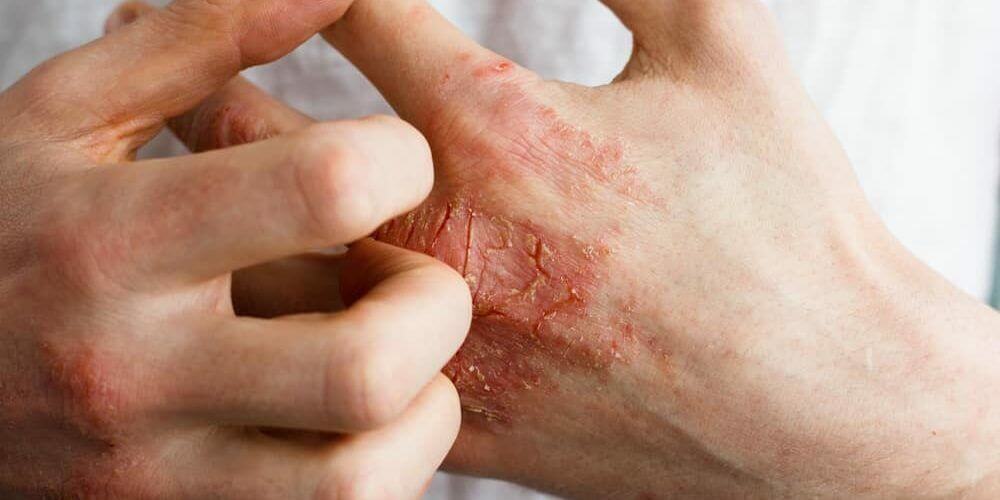
A relatively large number of people with eczema are usually allergic to things such as mold, house dust mites or even animal allergies.
These allergies only make eczema symptoms worse in spring and summer.
Especially in the area where the clothes do not cover the body such as the face, eyelids, neck and forearms. That is why it is worth paying attention to the proper treatment of allergies. However, there are also several remedies that can help a lot in the treatment of eczema.
If there is a food allergy, it is also recommended to use a specific diet.
There is no clear evidence yet that milk or egg consumption can cause eczema problems. In the case of hay fever patients, a cross-allergy can also cause eczema. In the case of a birch pollen allergy, eating apples can be problematic, and in the case of a ragweed allergy, eating melons and tomatoes can cause skin problems. In these cases, it is not recommended to eat the vegetables and fruits listed above.
Dyshidrotic eczema, also known as hand peeling, is an itchy and painful skin condition that most commonly occurs on the sides and undersides of the fingers.
The disease usually presents as small, fluid-filled blisters. Then the blisters usually burst and the fluid leaks out, and the skin dries out, cracks and starts to peel.
Treatment of eczema at home
Baking soda for eczema
Baking soda (sodium bicarbonate) is a natural substance with anti-inflammatory and antibacterial properties. Eczema is a skin condition that is inflammatory in nature, so baking soda can help relieve symptoms. When applied externally, baking soda can improve the skin’s pH balance, which can help improve the skin’s defenses. Before using it in any way.
Oil of oregano
The essential oils in oregano oil have anti-inflammatory properties that can help relieve eczema symptoms. When applied topically to the skin, oregano oil can help reduce inflammation and itching. The use of oil of oregano for dyshidrotic eczema seems effective as well. You can use it diluted, added to bath water or even as a cream.
Aloe vera
Aloe vera has anti-inflammatory and moisturizing properties that can help relieve the symptoms of eczema. Aloe vera gel applied externally to the skin can help reduce inflammation and itching.
Dietary changes
Eating certain foods can be linked to the development of eczema. For those with eczema, it is recommended to avoid dairy products, sugar, gluten, eggs, citrus fruits and other allergenic foods. In addition, it is recommended to eat foods rich in fiber, such as vegetables, fruits, and whole grains.
More and more people are using natural solutions and different diets to treat eczema.
Polyunsaturated fatty acids (like omega-3 fatty acids) can be very good. Most are found in fish oil, olive oil, and seed oil. One of the main symptoms of atopic eczema is dry skin, so it is important to properly hydrate the skin. Of course, this boils down to the fact that it is not worth bathing for a long time, a 5-minute shower is enough and all chemical shower gels should be neglected. Regular moisturizing of the skin twice a day with herbal balms and other body lotions is recommended.

It is very important to strengthen the skin’s natural protective layer, which you can do with shea butter, evening primrose oil or almond oil, as these do not harm even very sensitive skin. If you consult a doctor with the problem, which is also recommended, the use of steroid drugs will certainly come up there. These can very quickly alleviate the problem for a while, but unfortunately they can also cause side effects. They make the skin thin and that’s not really good. So if possible, you should use natural preparations in case of eczema.
Unfortunately, eczema pictures do not always reflect reality, but now we will finally see what an eczema symptom can be with the help of pictures. Eczema can also occur on the face, as you can see in the pictures. Let’s see what eczema looks like in pictures.









